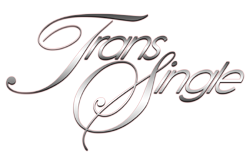User blogs
Two-spirit is a gender that is found in only North American who fulfills one of many mixed gender roles found traditionally among many Native Americans and Canadian First Nations indigenous groups. The mixed gender roles encompassed by the term historically included wearing the clothing and performing the work associated with both men and women. This English term emerged in 1990 out of the third annual inter-tribal Native American/First Nations gay/lesbian American conference in Winnipeg.
A direct translation of the Ojibwe term, Niizh manidoowag, "two-spirited" or "two-spirit" is usually used to indicate a person whose body has a masculine spirit and a feminine spirit. The term can also be used more abstractly, to designate the presence of two contrasting human spirits or two contrasting animal spirits (which, depending on the culture, might be Eagle and Coyote). Will Roscoe writes that male and female berdaches have been "documented in over 130 tribes, in every region of North America, among every type of native culture."The term berdache was coined by western anthropologists and used until the late 20th century, mainly to describe feminine Native Americans assigned male at birth.
The term is however inaccurate and can nowadays be considered offensive. Non-natives who use this identity are often accused of "appropriating Native culture." The history of two-spirits among Indigenous American culture dates back thousands, of years and has been documented in more than 130 North American tribes. Throughout history, a person who was recognized as two-spirit was someone who identified with both male and female gender roles, and so two-spirit is essentially a third gender recognized in Indigenous cultures.
The perspective among Indigenous Americans was that having this third gender was a strength their society benefited from. In the Zuni culture, a person's gender was not assigned at birth but was grown into 3 or 4 years of age. Two-spirits were not thought of as just a man or just a woman but as embodying characteristics of both genders in a single person, making them a more whole human being.

This Two-Spirits encourages the belief that, by avoiding the pressures surrounding an individual, they are capable of establishing their own identity. This identity for native Two-Spirit individuals arises from an acceptance of their native cultural values and a rejection of Western values. This rejection specifically applies to Western conventions regarding race and sexual identity as the Two-Spirit person’s identity is maintained by their sexual orientation as both male and female and their commitment to their culture or ethnicity.
Relationship partners of transgender-identified individuals have distinctive couple-related experiences that are important to understanding. The “Organizational Diversity” field concentrates studies on the experiences of groups that are different from the archetypal male, white, heterosexual, cisgender, able-bodied and western worker. When analyzing the studies regarding gender relations, however, one perceives their concentration on the dynamics between men and women localized in developed western countries. Transgender persons are persons whose identity and/or gender expression differs from what is socially attributed to their bodies, breaking with the heteronormative logic.
In Brazil, where only the bodies within this discourse are legitimate, this group is systematically excluded from a myriad of spaces including the formal job market. Therefore, the experiences of these people at and with work are invisible to organizational diversity's theory and practice.
To explore this issue, this study analyses the perceptions that the transgender person maintains about their relations:
1. With their professional history
2. With other people in their work environment
3. With organizational policies and practices.
Face-to-face semi-structured interviews were made with six transgender persons that work in organizations. From these narratives, it was found that the person's level of passing usually influences their relations and that the ignorance regarding transgender permeates all three domains of relations.
The Conclusions are:
1. The relations with work are marked by opportunity restrictions
2. The relations in the job hold the person responsible for their own intelligibility and safety
3. The relations with the organization vary according to the way it faces transgenderism and its own voice systems.
Transgenders are “people whose gender identity is different from their assigned gender at birth”. Individuals who identify themselves as transgender usually seek gender reassignment treatments, which may or may not include gender reassignment surgery. Transgender women (or trans women) are people whose body is read as male and whose gender identity is a woman. They usually go through treatments to acquire characteristics typical of the female gender and adopt names, clothes, and mannerisms seen as female. A transgender man (or trans man), in turn, is one whose body is read as female and whose gender identity is a man. They seek to acquire characteristics that are typical of the male gender and use names, clothes, and mannerisms seen as male. When considering their choice of work and hiring and admission processes, the word employed most often by respondents is if they are passable, the degree to which others take a transgender person as cisgender.
In practice, the higher a transgender person is passable, the less likely they are to suffer transphobia: if one's gender expression allows them to be seen by others as cisgender, they will not be subject to the prejudice and discrimination aimed at transgender people, increasing their chances of entering and remaining in the formal labor market. Two aspects affect them being passable: one's name and one's appearance. The ignorance regarding transgender people not only permeates the relations transgender people keep with others in their work environment, but also with the organization itself. The result is that trans phobia creates and maintains difficulties for transgender people in entering and remaining in the formal labor market.
For trans women, looking masculine can really take a toll on mental health and overall happiness. The persons around you may knowingly or unknowingly refer to you as "he" or "him" simply because of the way you look. But a beard, large arms or flat chest doesn't make you any less of a woman than a girl with big boobs and broad hips. For personal reasons, you may opt to not get gender reassignment surgery and that is completely fine. It is your life and you should live it the best way you see fit. Here are a few ways to make yourself look less masculine without getting “the surgery”
Making Your Face Appear Less Masculine
If your face looks too masculine, people will assume you are a man. One way to beat this is by completely removing all facial hair, except for your eyebrows. Your eyebrows should be shaved, tweezed, waxed or plucked. After all, they are the frame of your face and can make or break your entire look. Makeup is a great option for making your skin appear smoother, highlighting certain features and hiding others. But be sure to buy quality brands and get a lot of practice before going out into the world. And, if done properly, there's no way to tell that you are a MTF trans woman. You can also grow out your hair or add extensions to feminize your face. The right hairstyle can make that chiseled face look less pronounced and improve your overall appearance.
Making Your Hands Appear Less Masculine
When you look at or feel a woman's hands, generally they are smooth and soft to the touch. If you want to appear less masculine your hands are one part of the body that you must pay keen attention to. One way to make your hands appear less masculine is by moisturizing and conditioning the skin on your hands. This will over time soften the way your hands feel. Some great moisturizers are Coconut oil, Cocoa butter, Argan oil, and Jojoba oil. Another way to feminize your hands is by getting pedicures. Women are expected to have neat, attractive fingernails and by getting a pedicure the overall appearance of your hands will surely be less masculine. You may also get acrylic nails or gel polish styles that are in style now.
Lastly, jewelry is another way that is sure to make your hands appear less masculine. From rings to bracelets to bangles, there is an unlimited supply of jewelry that you can choose from in many different shapes, sizes, colors and designs at varied price points.
Wearing Feminine Clothes
Wearing feminine clothes is a big step in any trans woman's life. The right clothes can boost your confidence and make the people around you more accepting of you. Dresses, skirts, and heels are great options but if you are shy, try feminine jeans or blouses. There are many other ways to make yourself appear less masculine without having gender reassignment surgery. Hopefully, these tips help!


